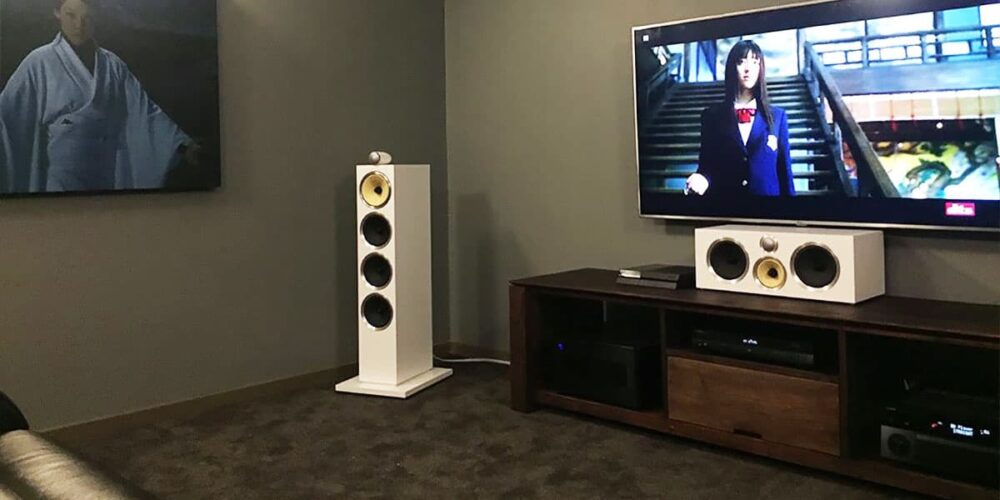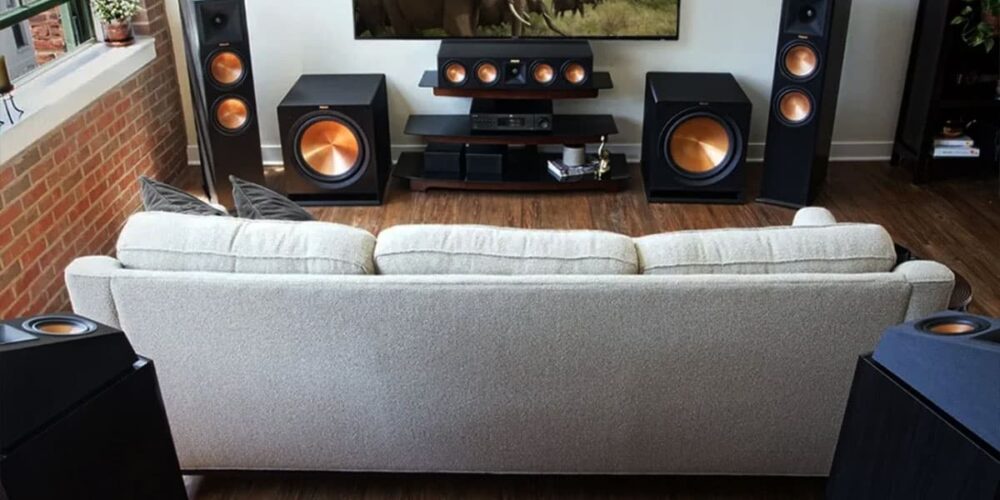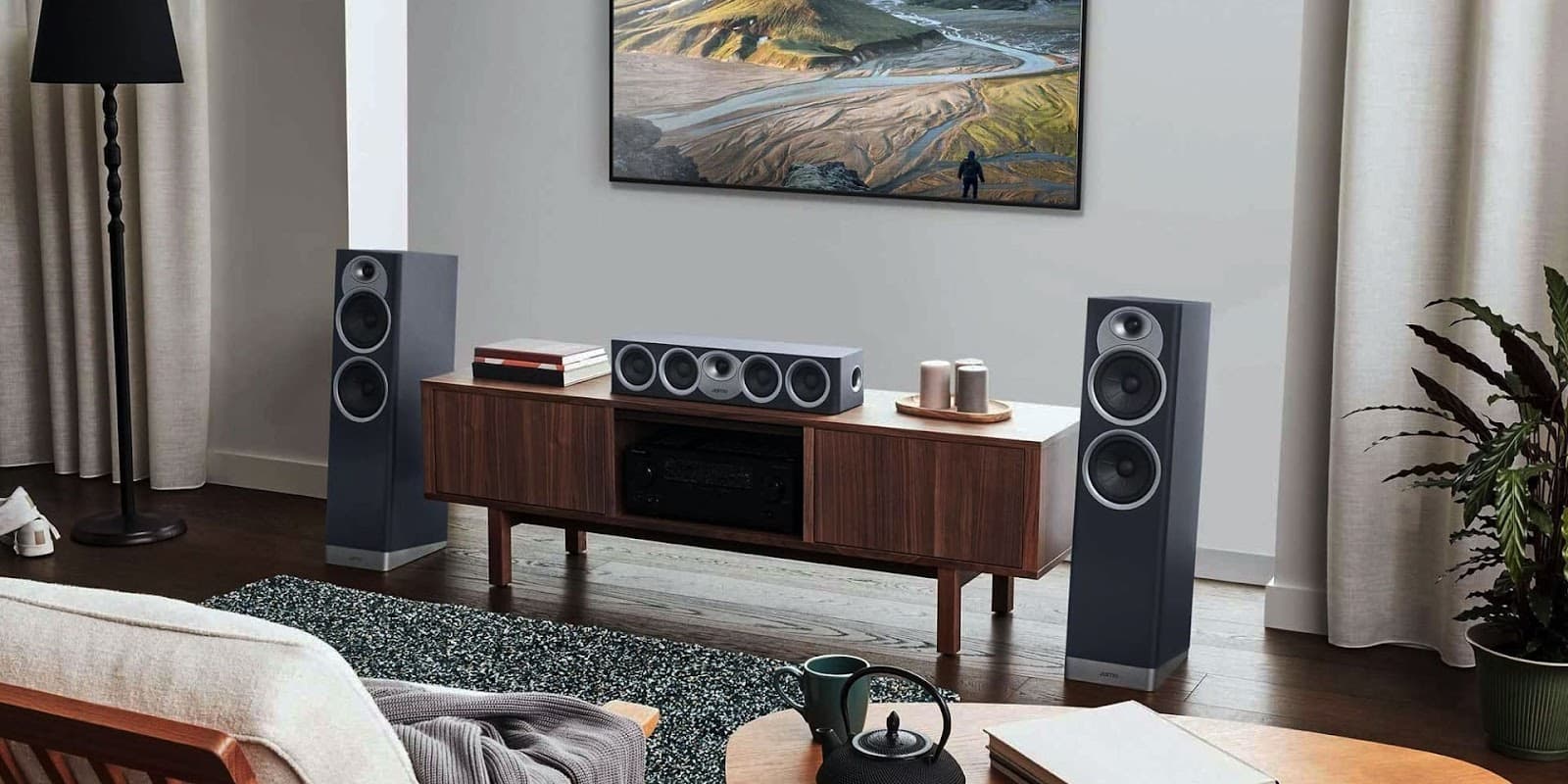It can be quite a dilemma to choose between budget and high-end home theater systems. I know this is a hard choice for you. Home theater systems that recreate the movie experience at home are popular, but no two systems are the same.
In this blog post, we’ll discuss the main distinctions between the budget and expensive options. As a result, you’ll be able to choose wisely based on your priorities and finances.
Shall we solve the mystery together so that you can get the device you really need without spending too much money?
Key components of home theater systems
First of all, I’ll guide you through the key elements of a home theater setup, comparing sound quality and features between budget and high-end options.
Display device
The display is the center of the home theater. You’ll find cheap screens with average picture quality at the cheaper end of the spectrum, many using LCD or lower-end LED technology. The more expensive you go, the better quality you get, from the standard LED TVs to the higher-end OLED displays and even projectors. The premium options give us excellent contrast, color fidelity, and overall picture details, leading to more realistic viewing.
Sound system
A home theater’s first requirement is good sound quality. Basic systems have good audio quality; however, advanced speakers with better drivers, housings, and audio processing give more dynamic, detailed, and immersive sound. Subwoofers in the high-end class impart a strong and deep bass that provides the needed punch to movie soundtracks and music.
AV receiver
AV receivers process audio and video signals and then send them to speakers and displays. Budget models offer only basic features, but high-end models provide surround sound processing, advanced video functions, easier operation, networking capabilities, etc. They also have more HDMI inputs and outputs for convenient connection.
Source devices
Finally, we have the source devices that feed content into your home theater system. In the affordable home theater systems, you’ll get the ability to connect standard devices and work with basic video formats. As you move up the pricing ladder, you’ll find players with advanced video processing capacity, support for 4/8K and HDR content, and features such as Dolby Vision and HDR10+, which can elevate the visual experience.

Performance and quality
Picture quality, for starters, is where high-end systems really shine, offering crisper resolution, advanced HDR compatibility, and color accuracy that can make your favorite flicks leap off the screen. While you can still snag a decent picture on the budget side, these features might be more limited.
Then there’s sound quality. High-end home theater systems envelop you in clarity, depth, and a presence that makes you feel right in the middle of the action. Home theaters on a budget, though improving, often can’t match the immersive experience their pricier counterparts deliver.
And let’s not forget about build quality and durability. High-end systems boast superior design and materials, ensuring your setup withstands the test of time. Budget options might cut corners here, affecting how long your system keeps chugging along without issues.

Features and technologies
- Latest technology: For the most pleasing movie experience, consider top-of-the-line options with immersive audio styles like Dolby Atmos, AURO-3D, DTS:X, and 4K/8K support. Budget systems may have elementary features but can still provide a good experience.
- Connectivity and integration: Generally, these systems have friendly connectivity options, for instance, HDMI inputs, compatibility with network and streaming, and voice control features. Hence, budget models can be slightly less flexible in this aspect but should still provide the connection for most basic layouts.
- User interface and ease of use: The premium units have a more robust and user-friendly interface, as well as features such as automatic room calibration, voice control, and intuitive on-screen menus. In this case, the budget variant is a bit hands-on and provides a basic user experience.
Who should choose what?
For enthusiasts and audiophiles, it’s time to open up that wallet! Invest in a top-tier OLED TV, a premium speaker setup, and a high-end receiver that can handle the latest 3D formats. It’s all about creating that immersive, cinema-quality experience at home without compromise.
Regardless of your budget, the key is finding the spot between cost and performance that aligns with your priorities.
